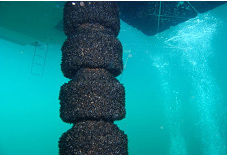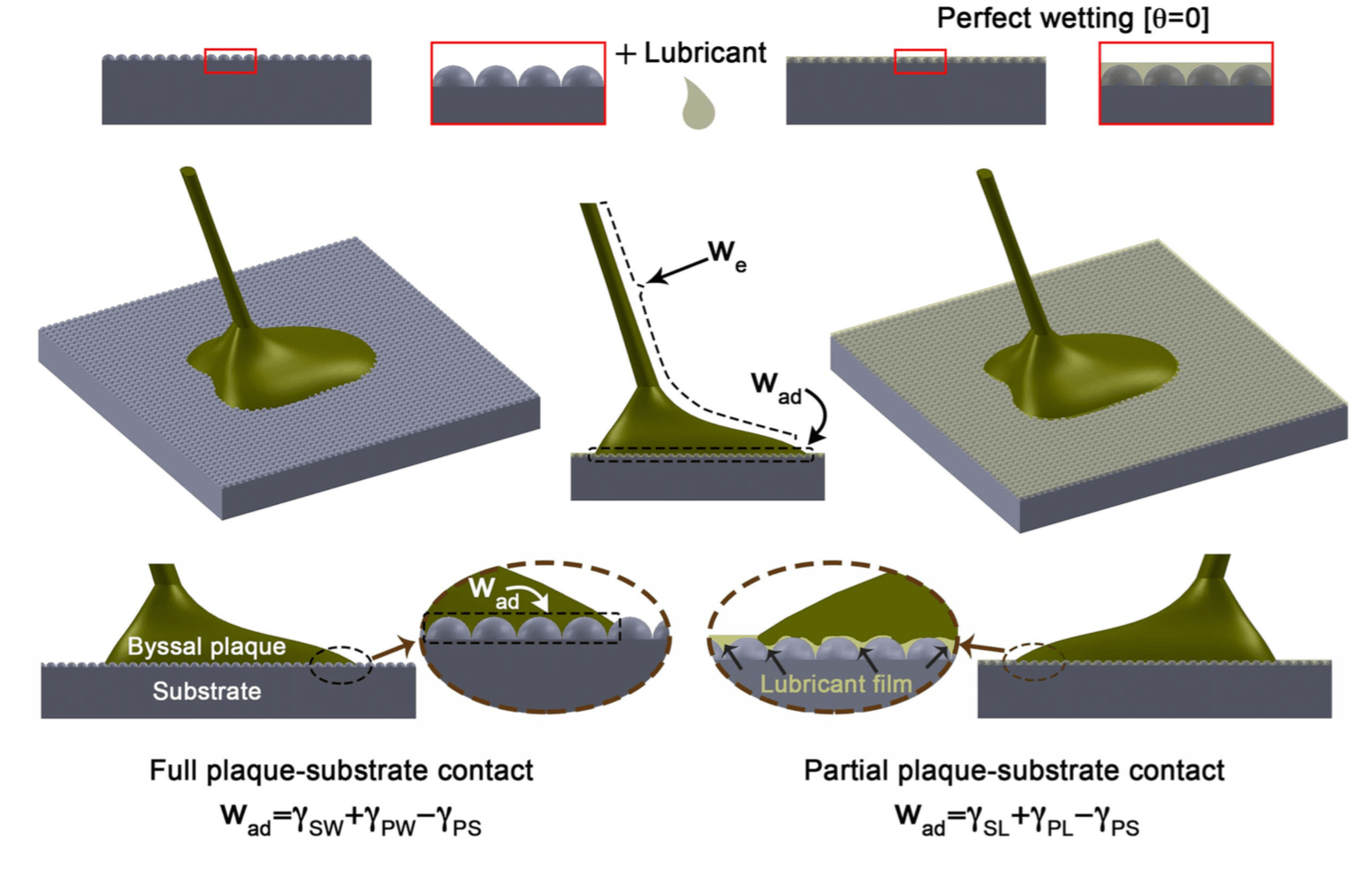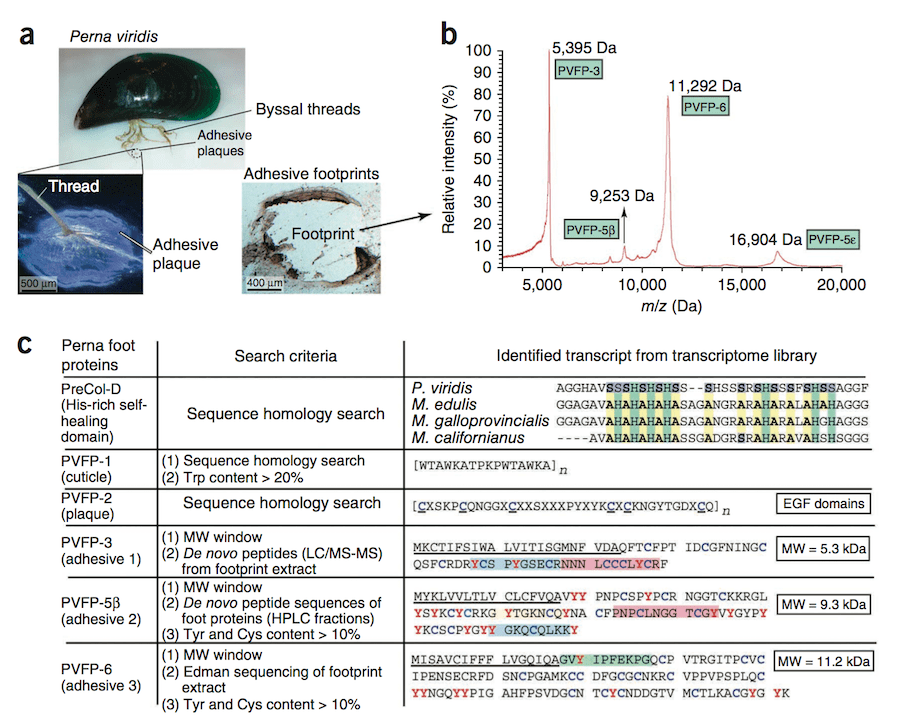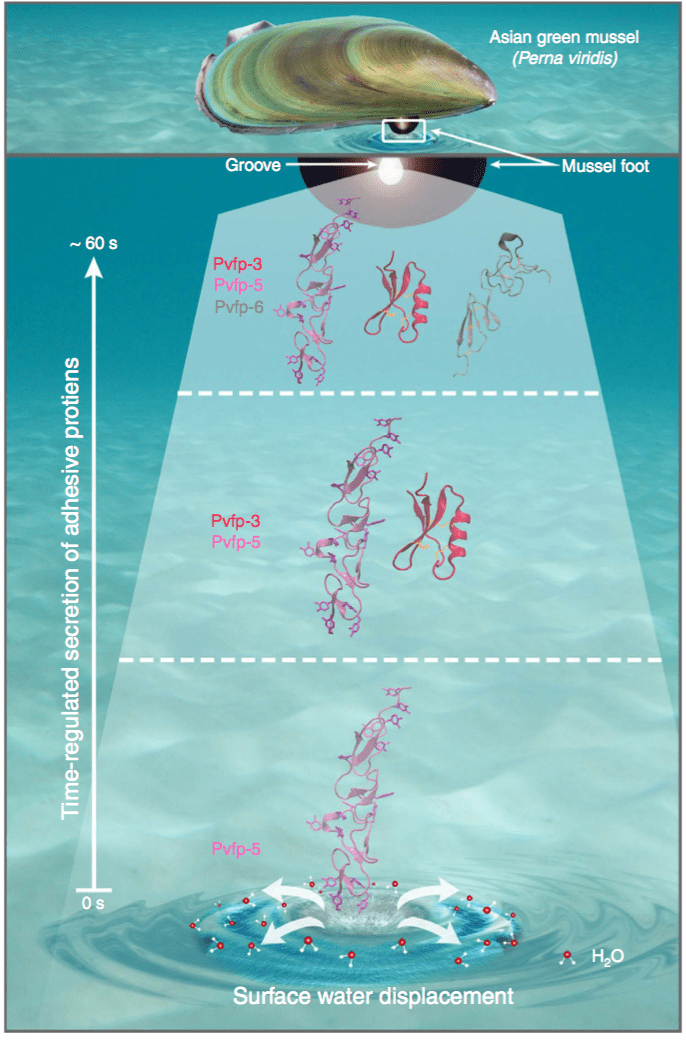Adhesion of marine fouling organisms to underwater structures adversely impacts the shipping industry, port infrastructures, and aquaculture facilities with high maintenance costs. Organisms such as barnacles and mussels, settle on the ships, leading to serious environmental repercussions. Their attachment decreases ship's hydrodynamic performance, and lowers maneuverability, severely impacting fuel consumption, emission of air pollutants and greenhouse gases. Therefore, managing biofouling is an effective strategy to enhance the energy efficiency of ships and reduce CO2 emissions. Furthermore, invasive species are translocated to new environments by ships mainly through hull or ballast water, posing dramatic alterations in the ecological balance of coastlines.
In Singapore, major macro-fouling vectors are the green mussel Perna viridis, barnacles, bryozoans, and tubeworms. Some of these invasive species stick to virtually all submerged structures in high density. To prevent these adverse effects, the development of eco-friendly and non-toxic anti-fouling coatings is crucial. The key characteristic that drives biofouling lies in the adhesive proteins. Invasive aquatic organisms use these proteins to stick to immersed surfaces and form a primary interfacial layer with the substrates.



